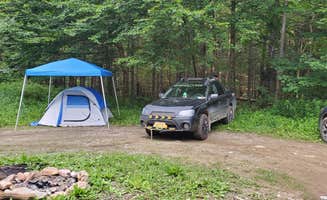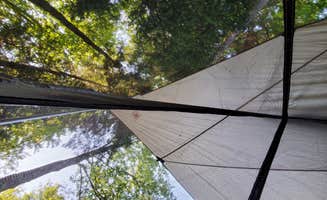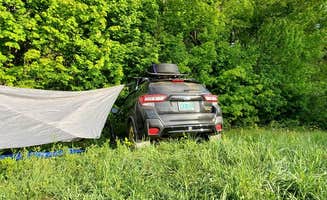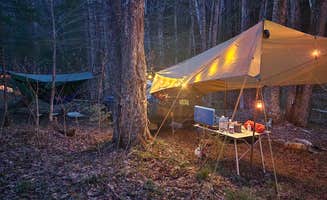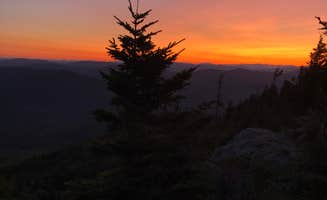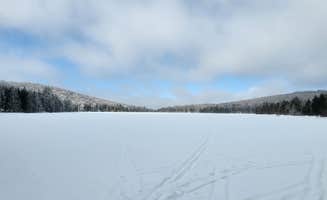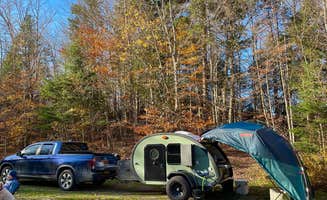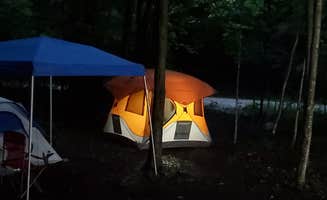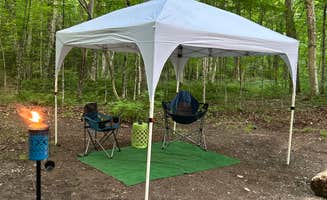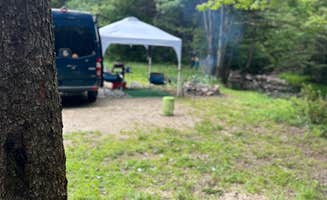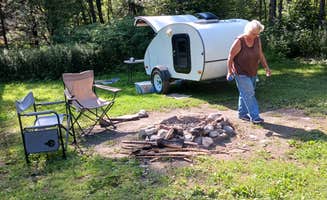Primitive camping near Fair Haven, Vermont provides access to Green Mountain National Forest's dispersed sites spanning Vermont's central mountain range. Most dispersed locations in this area sit between 1,400 and 2,300 feet elevation, requiring steep forest road approaches. Seasonal rainfall impacts road conditions severely from late March through early May, when many access points become impassable regardless of vehicle type.
What to do
Waterfall exploration: Texas Falls offers accessible primitive camping alongside dramatic cascades. According to one camper, "Brook water filtered fine and was tasty. Relatively short walk to waterless toilets was welcome. Very pretty area" at Green Mountain National Forest Texas Falls Primitive campsites.
Mountain sunrise viewing: Position your campsite for spectacular morning views. At Green Mountain National Forest FR207, campers can "choose either sunrise or sunset and you should be able to get a site to fit your needs." Several established sites face east toward dawn.
Wildlife spotting: Winter camping provides unique wildlife encounters. One visitor reported they "woke up to two moose nearby the morning I was leaving" during a winter camping trip at FR207. Early mornings and dusk offer best viewing opportunities year-round.
What campers like
Secluded forest spots: Private camping areas hidden from main roads provide true solitude. One camper describes Downed Bridge Camp as "a walk in and is worth it. The road into here was easy to drive. The only thing you will find at this primitive site is a fire ring."
Riverside campsites: Several dispersed areas provide stream-adjacent camping. According to one visitor at Crane Pond Dispersed Site, "There is a stone cliff near it that goes down about 12 feet and is great for fishing or jumping off of. There is also a stone area right by the water if you want to fish or just sunbathe."
Night sky viewing: Light pollution remains minimal throughout the region. A camper at FR207 reported "Beautiful sunsets, night skies and scenery. Extremely calm and peaceful" during their winter visit. Cloud-free conditions between September and November offer optimal stargazing.
What you should know
Vehicle clearance requirements: Many forest roads demand high-clearance vehicles. As one visitor noted about FR207, "This is not a place to go without at least 9" of ground clearance." Rough terrain increases after rainfall.
Site availability patterns: Weekends see heavy use May through October. One camper at On the Hill Dispersed Camp mentions "I've camped here a few times, it a nice size primitive site for a small group." First-come availability typically remains open Monday through Thursday.
Cell service variability: Coverage exists at select locations. One camper reports "2 bars USCellular LTE" at FR207 meadow sites. Most other dispersed locations have no service, requiring offline maps.
Water filtration necessity: No potable water exists at primitive sites. Streams require treatment with filter or tablets. According to one visitor at Texas Falls, "Brook water filtered fine and was tasty."
Tips for camping with families
Waterfront access: Select sites with safe water features for children. One visitor describes at Crane Pond: "The view right there is beautiful and at night you can hear the loons (visible during the day as well)." Look for gradual-entry water areas rather than steep banks.
Privacy considerations: Some sites offer better separation from neighboring campers. One visitor at Road's End Dispersed Camp describes it as a "great private spot when nothing else is around. The drive in is a little rough, but doable for most vehicles."
Tree coverage assessment: Evaluate overhead protection for sudden weather changes. A camper at FR207 noted one site "had great tree coverage to easily set up a tarp." Sites with mature hardwoods provide better storm protection than meadow locations.
Tips from RVers
Meadow accessibility: Select level areas for larger vehicles. A camper at FR207 notes "multiple fire rings/sites" in the first large meadow, while "upper meadows accessible with 4WD/high clearance vehicles only." Lower meadows accommodate smaller RVs with modest ground clearance.
Turnaround limitations: Many forest roads lack adequate turning space for larger rigs. Ensure your total vehicle length allows navigation without backing long distances. The FR207 entrance meadow provides the widest maneuvering area.
Spring hazards: Avoid muddy seasons with heavier vehicles. One camper warns, "Make sure to have a backup plan during the mud season" as ground conditions rapidly deteriorate after rainfall.


